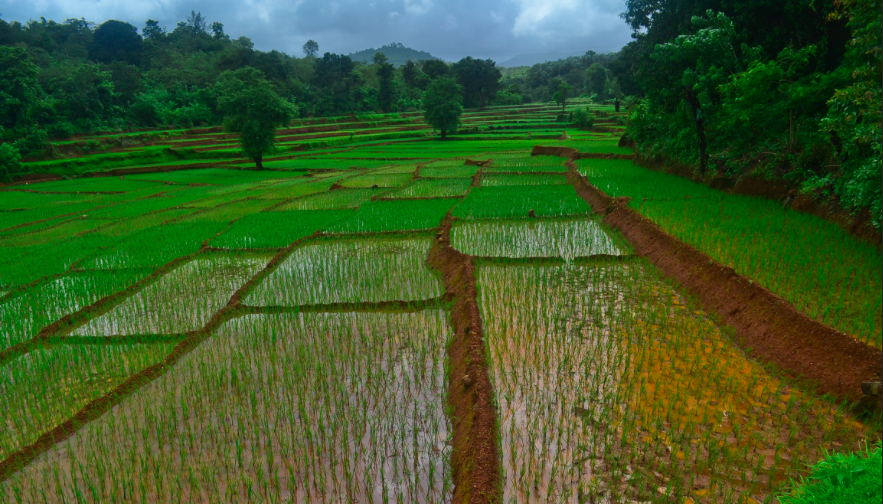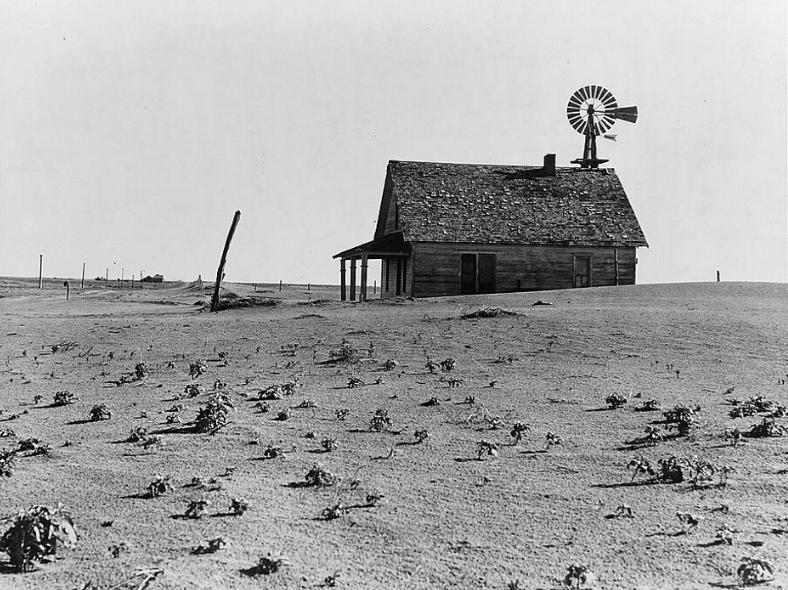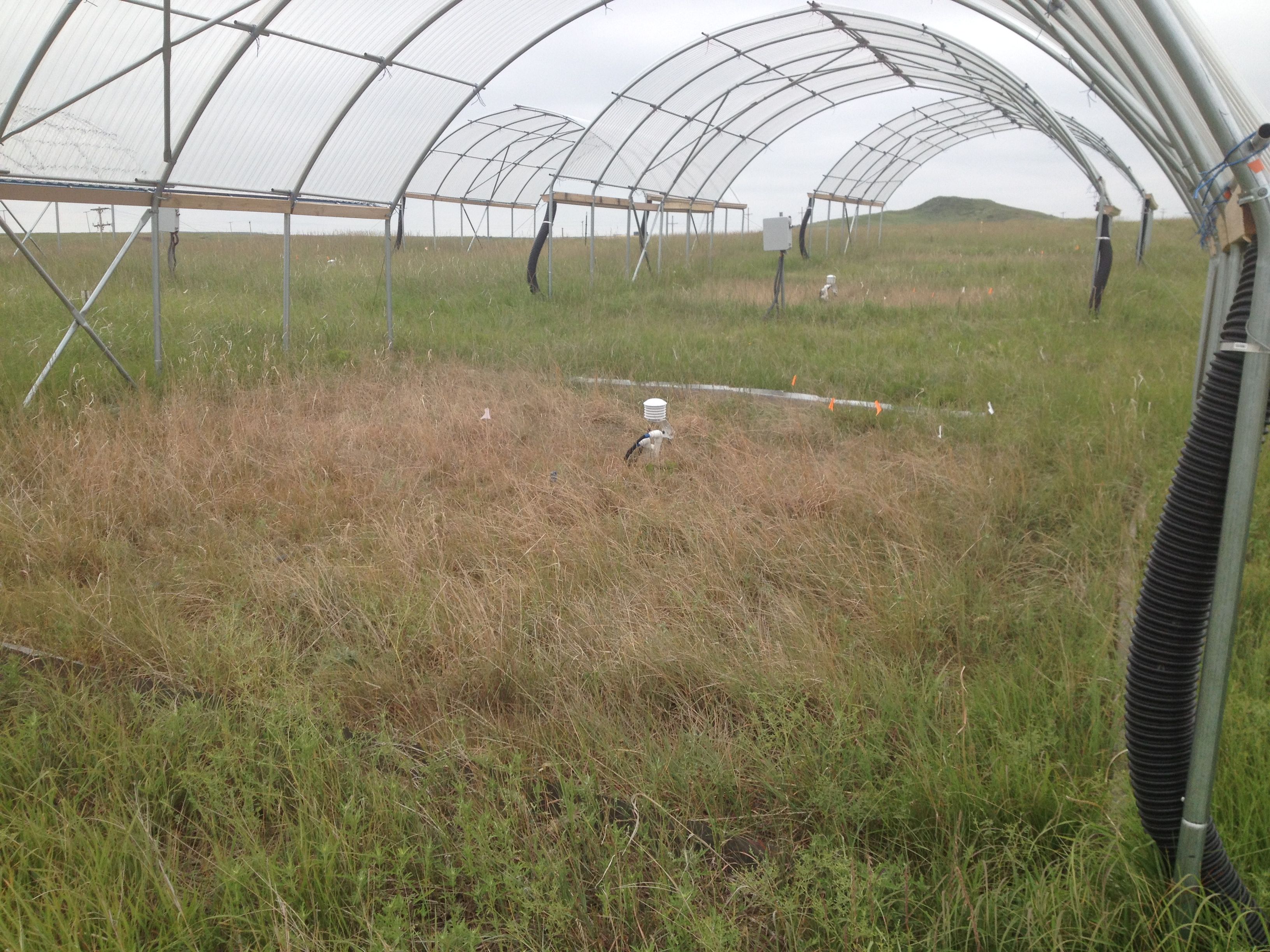
Drought Matters: a Social-Ecological perspective
By Andrew Felton
Drought is a deceivingly complex phenomenon. Behind the absence of rainfall, the impacts of drought feed into our social, economic, and ecological systems. The 2012 Intergovernmental Panel on Climate Change report placed particular emphasis on the likelihood of increased drought frequency and severity in the future. Drought is important because it highlights how our social and ecological systems are bound together on water dependence. Indeed, as society moves towards an increasingly water stressed future, an improved understanding of the impact of drought is necessary to face the impending challenges ahead.
To really grasp the societal impacts of drought, we must first acknowledge how closely integrated rainfall is with human systems. This integration begins with the transition to an agrarian lifestyle ~10,000 years ago by our Neolithic ancestors. As a result of this transition, the food supply became highly centralized, intensifying human dependence on ample rainfall for crop and livestock production. Precipitation gradually became fundamental to sustaining the livelihoods of people across the world because it was an essential component to food security and human health. This dependence has intensified through time as the human population has exploded, with both the sustenance and economics of populations remaining innately tied to rainfall.

While many examples of this dependence exist, few are more eclectically significant than the summer Indian monsoon. The monsoon is the result of warm temperatures causing water to evaporate from the Indian Ocean, rise to the sky as vapor, and condense over Southeast Asia as massive amounts of precipitation (1). Historically predictable, these swells of rainfall sustain the rich rice-economy for much of Asia, which is consequently responsible for 92% of the world’s rice production (2). Without this process, a third of the human population would suffer catastrophic consequences. Historical precedents of rainfall deficiency can yield insight into these potential consequences.
Closer to home, the history of drought within the U.S. provides us with an example of the power of drought. Within the North American Great Plains, the dust-bowl droughts of the 1930’s resulted in severe agricultural, social, and economic devastation. The dust bowl era of the 1930’s was ultimately the manifestation of improper land use. As farmers looked to recover from the great depression, they misguidedly intensified their farming and plowing of native prairie to increase yields, cited as “the great plow up”.

The mismanagement of the land undermined thousands of years of North American grassland ecology and evolution in less than half a century. The plow left the landscape open, vulnerable, and bare without the native grasses to anchor the soil in. Rapid drying and erosion ensued that intensified under the multi-year drought. The dried and unanchored soil was left exposed, blown up and away with the high winds of the Great Plains in massive dust storms. As a consequence, inhabitants of the Great Plains (not just farmers) were not able to maintain livelihoods, and were forced off the land in a mass exodus. The dust bowl highlights not only the power of drought, but also how our influence on and negligence of ecosystems can amplify its effects.
Currently, droughts in the American West emphasize how complex our reliance on water is. Within California alone, the 2014 drought is estimated to have cost the state $2.2 billion dollars (3). Although the heavy dependence on water reserves in the west has likely buffered many potential effects by stabilizing food market prices, the groundwater supply is finite. This presents a crossroads for management of water reservoirs in light of drought. It is evident that the demand on these reservoirs-like those found in the Colorado River basin-are exceeding their supply. If the science is correct, the intensified frequency and intensity of drought will deterministically increase our dependence on water reserves. Ultimately, this will present challenges for water-management within the Western United States, a region responsible for a significant amount of agricultural productivity and home to millions of people.
Outside of agriculture, ecosystems all over the world provide us with the regulating services we need to survive, such as water purification and atmospheric oxygen. One especially critical service of interest in ecology is the ability of ecosystems to take in carbon, i.e., carbon sequestration. At any given second, billions of plants are absorbing carbon dioxide and water, casually turning that into sugar with help from sunlight, and then emitting oxygen into the air; the art of photosynthesis.
However, drought severely undermines the ability of ecosystems to carry out basic processes that allow for carbon sequestration. A recent scientific article has even stated that drought is the most prominent factor influencing Earth’s carbon balance (4). It comes down again to water; without water ecosystems cannot function. Consequently, without sufficient rainfall more carbon dioxide will remain in the atmosphere. This will only add to the fundamental consequence of the industrial revolution, which has been the increased concentration of carbon dioxide in the atmosphere that has contributed to the unprecedented warming of the Earth.

As uncertainties loom high, an understanding of how ecosystems will respond to future projections of drought is needed. To achieve this, scientists are developing innovative approaches towards ecological research, including here at Colorado State University. CSU Scientists and Professors Dr. Alan Knapp and Dr. Melinda Smith of Colorado State University, along with collaborators in New Mexico and China are leading one of the most ambitious studies on drought in history. The name of the project is the Extreme Drought in Grasslands Experiment (EDGE). Why grasslands you may ask? For one, grasslands and savannahs occupy over 40% of Earth’s landmass (5). Consequently, grasslands are critical targets for understanding the aforementioned carbon-sinking ability of the Earth.
EDGE is a multi-site approach to assessing ecosystem sensitivity, replicating the experiment across different grasslands within North America. The project seeks to understand how different grasslands vary in their responses to a four-year drought similar to the 1930’s dust bowl conditions, stretching from arid New Mexico to Wyoming, and soon within five sites across China. Indeed, the expectation will be that certain grasslands are more vulnerable than others, especially as the project is expanded into the Mongolian Steppe of China. As professors and graduate students collaborate within EDGE, insights ranging from the genetics and physiology of individual plant responses to the function of the ecosystem will provide a holistic view of ecosystem responses to drought that we are currently lacking.
The reality of drought is that it is multifaceted, much more so than a brief article can fully capture. However, drought presents a unique perspective on the social-ecological relationship we employ with Earth, one that places particular emphasis on how humans are tied to ecosystems. If progress is to be made in regards to understanding and mediating the consequences of drought, let it begin with one general agreement amongst all of us: drought matters.
Sources. [1] Ratna et al. Moisture Trend of the Arabian Sea and its Influence on the Indian Summer Monsoon Rainfall. 2014. Centro Euro-Mediterraneo sui Cambiamenti Climatici [2]Gadgil et al. The Asian Monsoon-Agriculture and Economy. 2006. The Asian Monsoon, pp 651-683. Springer Praxis Books [3] Drought Impact Study: California Agriculture Faces the Greatest Water Loss Ever Seen. July 15, 2015. UC-Davis-News and Information http://www.news.ucdavis.edu/search/news_detail.lasso?id=10978 [4] Reichstein, Markus et al. 2013. Climate Extremes and the Carbon Cycle. Nature, 500, 287-295. [5] An Eocosystem in Transition: Causes and Consequences of the Consersion of a Mesic Grassland to Shrubland. Bioscience, 55, 243-254.
Andrew Felton is a Phd student in the Graduate Degree Program in Ecology and the Department of Biology at CSU. His research interests focus on how characteristics of climate change, specifically those of climate extremes, will influence the response and recovery of fine to broad-scale processes in grassland ecosystems.